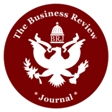Blockchain and
Accounting: Cryptocurrencies, Fraud and Regulation
Dr. Michael Ulinski,
Pace University Pleasantville, NY
Dr. Roy Girasa, Pace
University Pleasantville, NY
ABSTRACT
The researchers reviewed public accounting and
regulatory initiatives regarding the use, advantages and drawbacks of
blockchain technology. They were concerned with the “state of the art” for
effective implementation by professional accountants and focused on the
integration of cryptocurrencies into blockchain technology. Stakeholders
such as independent accountants, the Securities and Exchange Commission,
international regulators, government accountants as well as forensic
accountants and investors were studied to understand their perspective.
Conclusions are drawn and recommendations for further study are made. Blockchain
technology has already affected accounting functions from basic bookkeeping
to audit and advisory services. KPMG one of the largest accounting firms,
has established a Digital Ledger Service group where the use of blockchain
capabilities in the cloud, including faster and more secure transactions,
streamlined and automated back office operations, and reduced costs(1).
Blockchain is a type of distributed ledger technology (although many people
now use the terms interchangeably). DLT has the ability to allow users to
record data and transactions instantaneously in a way that is unhackable. A
key to understanding blockchain is that each distributed ledger isn’t
maintained or stored by any one entity, but is accessed and cultivated by a
number of users. Everyone’s changes appear instantly on each user’s copy of
the ledger and are encrypted in a way so that they can’t be changed or
deleted. Thus, each new block is permanently linked onto an unbreakable
chain.(2)Accountants of all stripes from governmental, independent auditors
to forensic accountants are key stakeholders in possible blockchain
stewardship of the phenomenon to be as prevalent as the internet itself. At
its core, a blockchain is just a database that is maintained by a network of
users and secured through cryptography. When new information is added to the
database it is parceled in “blocks,” which can be thought of as containers
for this data. Every so often a new block is created and linked to a “chain”
of previously created blocks. Each block has a unique ID called a hash that
is created by running the ID of the block that preceded it and the data
stored in the current block through a cryptographic algorithm.
Full text
An Exploratory
Examination of Excessive Requirements of Letter of Credit and Uniform Customs
and Practice 600
Dr. Sut Sakchutchawan,
College of Business, Kean University, NJ
Dr. Clifford Fisher,
Krannert School of Management, Purdue University, IN
ABSTRACT
The discrepancy of international trade has been a major
worldwide issue for decades. This has been a significant problem for sellers,
buyers, and banking institutions when banks discover discrepancies on
international trade transactions and documents prior to making payments
resulting in unnecessary delays, refused payments, and financial loss. This
paper illustrates the problems of discrepant trade documents caused by the
ambiguous and excessive requirements of terms of letter of credit and the
Uniform Customs and Practice 600. This paper recommends exporters advise
importers to omit excessive terms and ambiguous conditions in the letter of
credit. This paper also recommends changing legal language of the Uniform Custom
and Practice 600 into a clearer language. The practical example and template for
each article of Uniform Customs and Practice 600 should be provided as well.
As exporting and importing business continue to grow as a part of production of
the world, more attention and emphasis have been placed on understanding the key
aspects of international trade transaction (Sakchutchawarn and Fisher, 2016).
International trade is obviously a significant factor to develop national
economic growth since not all countries have the resources and skills required
to produce certain goods and services. The growth of international trade
can offer new opportunities for importers and exporters. It is impossible for a
country to produce domestically everything for its citizens need or demand.
Without foreign trade, national resources are not put to their best use. More
exporters are looking for foreign markets to sell their products. Export market
is normally so much larger than the firm’s domestic market. Most notably,
companies export to increase their revenues. More importers are also looking for
sources of supply to buy products. Companies and distributors seek out products,
services, and components produced in foreign countries.
Full text
Evaluating the Effect
of Service Quality on Customer Satisfaction and Customer Loyalty in the
Restaurant Industry:
A Canonical Correlation Approach
Kaie-Chin Chung, Nanya
Institute of Technology, Taiwan
ABSTRACT
The primary purpose of this study was to evaluate diners’
perceptions of service quality and its effects on customer satisfaction and
customer loyalty in the Taiwanese fine dining restaurant industry. The present
study employed the survey instrument ERVQUAL to obtain information concerning
customer reactions to aspects of the dining experience through a
self-administrated questionnaire survey. The study employed a technique,
canonical correlation, to establish relationships between composite variables of
service quality and customer satisfaction, service quality and customer loyalty,
and customer satisfaction and customer loyalty in a Taiwanese setting. It is
expected that establishing and maintaining a positive perception of quality of
service and satisfaction among customers will help restaurants retain the
existing customers and attract new ones. Concluding remarks suggest several
avenues to extend the current study. The importance of environmental and
service aspects of the dining experience to restaurant patrons has been
established and subjected to significant research. The relative importance of
these aspects varies with type of restaurant. Large chain operations, fast food
restaurants in particular, gain advantage based on cost savings derived from
economies of scale, whereas fine dining restaurants tend to succeed through
differentiation of their products and thus creation of a unique brand that
customers find attractive and are willing to recommend and continue to
patronize. Moreover, restaurant type ranges between the two extremes; for
instance, Muller & Woods (1994) cite five different types from “quick service”
to “upscale and business dining.” Different authors have emphasized different
restaurant types not only within this scale but also in all-you-can-eat buffet
restaurants (Oyewole, 2013) and fast-casual restaurants (Ryu et al., 2010). As
restaurants depend more heavily on specialization rather than economies of scale
to succeed, aspects of the customer dining experience beyond just the food
served become increasingly important. These aspects consist of the environment
in which the food is prepared, served, and consumed and the characteristics of
customer interactions with restaurant staff.
Full text
Profit Shifting
Behavior: The Case of the Czech Republic for the Selected Industry Sectors
Dr. Veronika Solilova,
Mendel University, Brno, Czech Republic
Dr. Danuse Nerudová,
Professor, Mendel University, Brno, Czech Republic
Dr. Marian Dobranschi,
Mendel University, Brno, Czech Republic
Dr. Marek Litzman, Mendel
University, Brno, Czech Republic
ABSTRACT
The aim of this paper is to research the profit shifting
behavior within the same multinational group of companies operating in the
selected industry sectors. We research the sensitivity of profitability of sales
to tax differences between Czech subsidiaries and their sister companies placed
in other European Union countries. Specifically, the objective of our research
is to determine whether the profitability of sales is decreased or increased due
to the corporate income tax differences. In this paper we adopted the Hines-Rice
approach, which was modified based on the last improvements. Based on the
results of the models used, the sensitivity of profitability of sales to tax
differential was proved. Thus it can be concluded, that profit shifting to the
Czech Republic occurs if other EU countries increase statutory or effective CIT
rates, namely in case of Czech subsidiaries operating in the industry sectors
NACE G, L and M focusing on the services. The Multinational Enterprises
(hereinafter as MNE) can exploit different tax rules regarding the corporate
income taxation in different jurisdictions in order to avoid paying taxes on
profits or to decrease the overall tax burden. Generally, the essential
rationale in case of profit shifting is to move profits from high-tax countries
to low- or no-tax jurisdictions. Therefore one of the key factors that
incentivize the moving of profits from one jurisdiction to another is the
corporate tax rate differences between world countries. OECD (2015) estimates
annual losses of 4 up to 10% of corporate income tax revenues (i.e. 100 to 240
billion USD) through base erosion and profit shifting. Therefore profit shifting
and tax base erosion represent a current topic across the world countries. Our
objective is to research the sensitivity of profitability of sales to different
tax regimes, particularly, we would like to identify if profit shifting occurs
in case of Czech subsidiaries operating in the selected industry sectors. We
choose to analyze the Czech subsidiaries owned by MNE placed in the EU that are
involved in wholesale and retail trade (NACE G), real estate activities (NACE L)
and professional, scientific and technical activities (NACE M). To reach our aim
we adopt the Hines-Rice approach to estimate the semi-elasticity of
profitability of sales to tax differentials between sisters companies placed in
EU countries owned by the same parent company.
Full text
|

 The Business Review
Journal
The Business Review
Journal



.gif)